Orthodontics
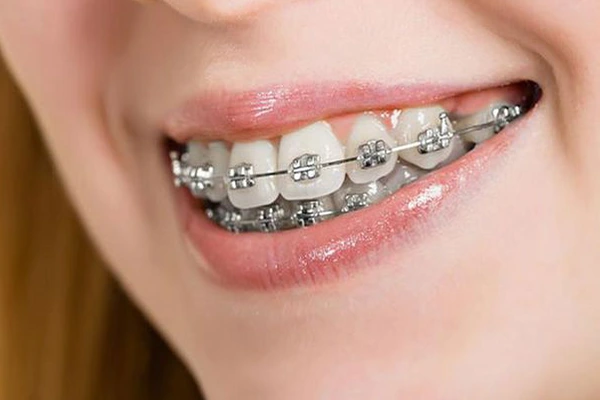
In today's world, health and beauty have become an integral part of our daily lives. One of the aspects that has received increasing attention is the field of dental care, as orthodontics is one of the important medical branches that seeks to improve the functions of the mouth and the general appearance of the face.
Orthodontics focuses on correcting and arranging teeth and treating deformities resulting from genetic or environmental factors, which contributes to achieving a healthy and attractive smile. With the continuous developments in this field’s techniques, orthodontics has become more effective and less uncomfortable for patients, until it has become a popular choice among different age groups.
In this article, we will review the importance of orthodontics, its types, reasons for its use, in addition to its stages, and how to maintain it, with the aim of providing a comprehensive understanding of this necessary treatment in improving oral and dental health.
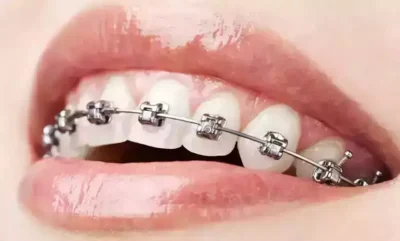
The importance of orthodontics in improving oral health and functions:
Orthodontics is a field in dentistry that focuses on diagnosing and treating issues related to dental alignment and jaw problems. This specialty involves preventing and correcting improper bite patterns that may result from misaligned teeth an imbalance between the jaws, or both. It can also include modifying the growth of the face and jaws, which is known as maxillofacial surgery.
Braces are more than just a cosmetic upgrade; they play a big role in overall oral health. By properly aligning the teeth, it becomes easier to clean and care for them, which reduces the risk of cavities and gum disease. Plus, braces help improve speech and contribute to better mouth functions like chewing and talking.
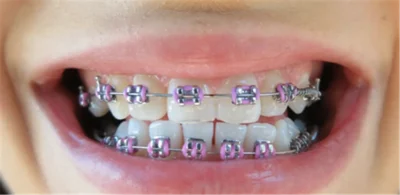
Indications for braces: Cases requiring treatment
Reasons for installing braces include several cases that need correction or improvement, including:
- Teeth crowding: It occurs when teeth are irregularly aligned due to lack of space in the jaw, making cleaning difficult and increasing the risk of cavities and gum disease.
- Tooth spacing: The presence of large spaces between the teeth due to missing teeth or the small size of the teeth relative to the jaw.
- Eruption of the front teeth: The upper or lower teeth stick out noticeably, which affects the overall appearance and may increase the likelihood of injury.
- MalocclusionProblems with the alignment of the upper and lower teeth, such as open bite, cross bite, or deep bite, which lead to problems with chewing and speech.
- balance between jawsA difference in the size of the upper and lower jaws causes difficulty in closing the mouth or speaking.
- Jaw alignment correctionIn some cases, braces help adjust the position of the upper or lower jaw to a more balanced position.
Installing braces helps treat these conditions, improves overall oral health, and prevents future problems related to the teeth and jaws.
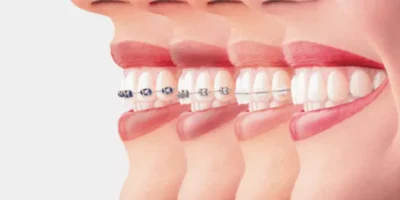
Types of orthodontics:
- Traditional metal calendar:
It is the most common and widely used and consists of metal brackets and wires that are fixed to the teeth. It is suitable for treating complex cases of crowding and malocclusion and is very effective, but it may be noticeable and aesthetically uncomfortable for some. - The ceramic calendar:
Many adults prefer ceramic braces because of their aesthetic appearance. This type of braces is made of a transparent ceramic material that matches the color of the teeth. This type has the advantage of achieving good cosmetic results without sacrificing efficiency. - Transparent aligner (Invisalign):
It consists of transparent trays customized for each case and is almost invisible, making it ideal for those who prefer an aesthetic solution. It can be removed during eating and cleaning, providing greater comfort, and is suitable for simple to moderate cases, but may not be effective in complex cases. - Internal (linguistic) curriculum:
It is fixed on the inside of the teeth to be completely hidden from view, so it provides an ideal aesthetic solution for people who do not want the braces to appear. It also requires high precision in installation and needs a doctor who specializes in this type, but it may be uncomfortable at first and requires time to adapt. - Surgical calendar:
It is used in cases that require major correction in the jaw structure or occlusion, where surgery is combined with orthodontics to achieve the desired balance between the jaws. It is suitable for people who suffer from major jaw deformities that require surgical intervention.
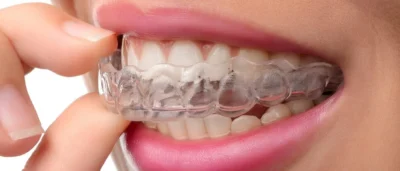
Stages of orthodontic treatment: from diagnosis to final fixation
The stages of orthodontic treatment include several steps starting from diagnosis and continuing until the final fixation stage. These stages include:
- Initial assessment and diagnosisAt this stage, the dentist performs a comprehensive examination of the mouth, teeth, and jaws. X-rays and dental samples may be requested to accurately assess the condition and develop an appropriate treatment plan.
- Setting up a treatment plan: After analyzing the results, the doctor develops a detailed treatment plan that specifies the appropriate type of braces, the duration of treatment, and its goals. The plan is explained to the patient to clarify the expected steps during the treatment period.
- How to put on braces: At this stage, the braces are being installed, whether they're metal, clear, or lingual. The installation usually takes about one to two hours, and it takes some time to get used to having the device in your mouth.
- Regular visits and follow-up: Orthodontic treatment requires regular visits to the dentist every 4 to 8 weeks. During these visits, the dentist adjusts the appliance to ensure that the teeth move as required and the desired results are achieved.
- Remove the calendar: When the desired results are achieved, the doctor removes the braces. This stage takes a short time and is followed by the fixation stage.
- Installation phaseAfter the braces are removed, retainers are used to maintain the results and prevent the teeth from returning to their previous position. These retainers may be permanent or removable depending on the doctor's recommendations.
- Long-term follow-up: After the treatment is completed, it is recommended to have a periodic check-up to ensure the stability of the results and to ensure that there are no unwanted changes in the position of the teeth.
These stages ensure achieving the perfect smile and improving the overall functions of the mouth when adhering to the doctor’s instructions precisely.
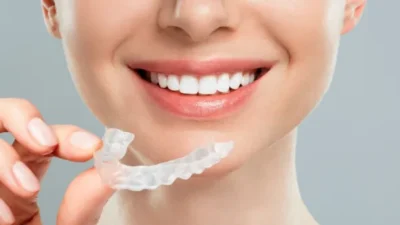
Does orthodontic treatment cause pain?
Orthodontic treatment may cause some pain or discomfort, especially when the appliance is first fitted or after regular adjustment sessions. This pain is usually the result of the teeth moving under the influence of the braces and lasts only a few days. In addition, some ulcers may occur as a result of the appliance rubbing against the inner tissues of the mouth. The pain can be relieved with simple painkillers and eating soft foods. In general, the pain is temporary and normal as part of the dental correction process.
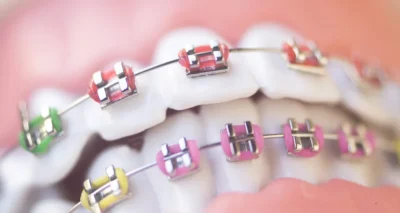
The main factors affecting the cost of braces:
The cost of braces varies based on several factors, including the type of braces used, the length of treatment, the experience of the doctor, and the geographic location of the clinic. Prices generally range from traditional metal braces, which are considered the least expensive, to clear braces such as Invisalign, which are more expensive. In addition, the cost may be higher if the treatment requires jaw surgery or the use of advanced techniques. The cost also includes initial examinations, x-rays, and periodic follow-ups. Some clinics offer flexible payment plans to spread the cost over the course of treatment, which helps make the treatment more financially affordable.
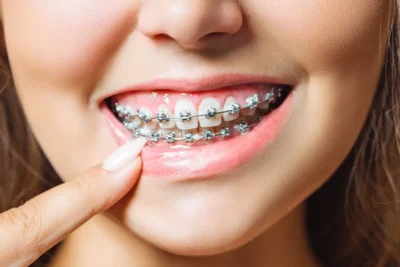
How to take care of braces:
- Brush your teeth regularly: Use a soft toothbrush and fluoride toothpaste to clean your teeth after every meal, focusing on the areas around the brackets and wires.
- .Using orthodontic floss: The special dental floss helps remove food particles and plaque from between your teeth and those hard-to-reach areas that a toothbrush can't get to.
- Avoid solid and sticky foods: Such as nuts, sticky candy, and corn, as they may damage the braces or loosen the brackets.
- Using mouthwash for disinfection: To help maintain healthy gums and prevent infections.
- Commitment to regular visits to the doctor: To adjust the calendar as needed and monitor treatment progress.
- Use of dental wax: To cover the sharp parts of the braces and avoid irritation and sores in the mouth.
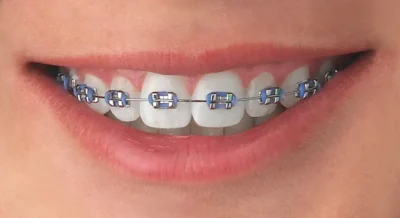
Finally:
In conclusion, orthodontics is an effective solution to address dental alignment problems and improve occlusion, which enhances oral health and gives the smile a harmonious aesthetic appearance. Although the treatment process may take time and requires commitment, the final results are worth the effort, as orthodontics contributes to improving speech, chewing, and daily cleaning of the teeth. By following medical instructions and taking good care during the treatment period, the patient can enjoy a healthy and beautiful smile that lasts for many years.
Please enter your data correctly
We will contact you as soon as possible.

